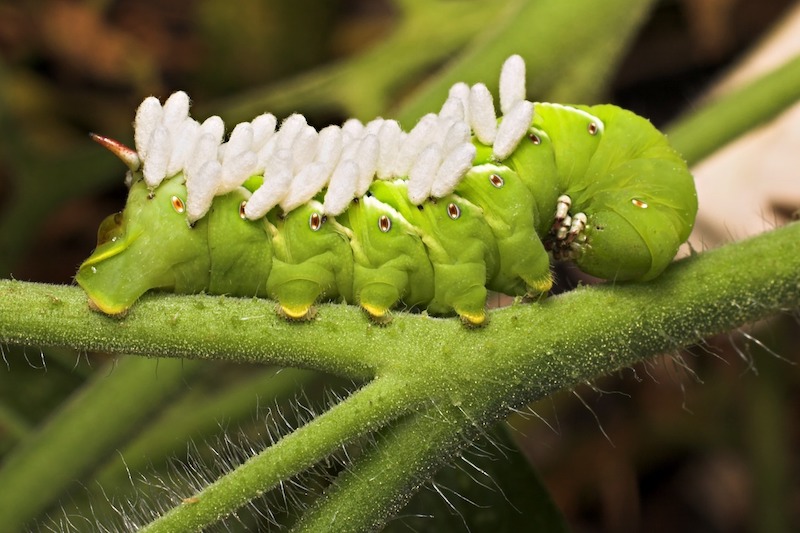Gardens can be plagued with many blights and bugs that destroy your plants. This article provides helpful tips and tricks for dealing with tomato hornworms and other destructive pests.
Tomato Hornworms
Q: What can you tell us about those big, ugly green single-horned tomato worms? Where do they come from? How can we prevent them?
A: Tomato and tobacco hornworms are two huge caterpillars (up to 5 inches long) that feed on tomato, eggplant, peppers and plants in the tobacco family. There may only be a couple on a plant, but they eat a lot of leaves. They live for a month, pupate and then hatch into a really cool, huge moth. In the northern U.S., the adult moth will hibernate until spring, lay eggs and die. In the South, there can be several generations each year.
They can be killed by being picked off and sprayed with insecticides containing the bacteria Bacillus thuringiensis. If you see any that have white sacks sticking out of their bodies like grains of rice, leave them alone. The sacks are the cocoons of very tiny native wasps that are natural parasites.
Q: Will the sap from my live oaks kill my St. Augustine? I have noticed in the past that the sap is so heavy that it gets all over the cars and gives everything a green tint.
A: The sap would be coming from insects feeding on the tree. If there is that much sap on the lawn, there could be enough insects to harm the tree. Many tree species are susceptible to sucking insects. The only thing bad that could happen to the lawn and any other plants growing under the tree is a fungus called sooty mold; it could grow on the sap and block sunlight from the leaves under the tree. An occasional spray with a hose or irrigation system can wash the sap and sooty mold off the other plants.
Sooty mold is a problem because it looks like black soot and covers anything the sap is on, not just plants. Don't park your car under one of these trees.
The tree should be looked at for scale insects, aphids and other sucking insects. A systemic insecticide can be sprayed or painted on the trunk, where it will soak in, move to the leaves and kill the insects without harming other good ones in the yard.
Q: We have noticed worms on the branches of our pine trees. They're completely destroying the green needles. The tree looks bare. What are these worms, and how do I get rid of them? Will they kill the tree?
A: They are most likely pine sawflies. They tend to eat the old needles, leaving the new growth of this year for next year's caterpillars. Since they are not the caterpillar to a moth or butterfly, bacteria-based insecticides don't work. Any contact insecticide will work. They can be knocked off with garden hose or power washer, and they probably won't make it back into the tree again, especially if they are stepped on. The tree will look bare for a year or two, but will be fine. Watch the tree for the next few years to get the caterpillars while they are small and before they eat too many needles.
Save or share this infographic for reference: Tomato Hornworms

Email questions to Jeff Rugg at [email protected]. To find out more about Jeff Rugg and read features by other Creators Syndicate writers and cartoonists, visit the Creators Syndicate website at www.creators.com.
COPYRIGHT 2017 JEFF RUGG
DISTRIBUTED BY CREATORS.COM



